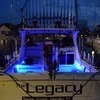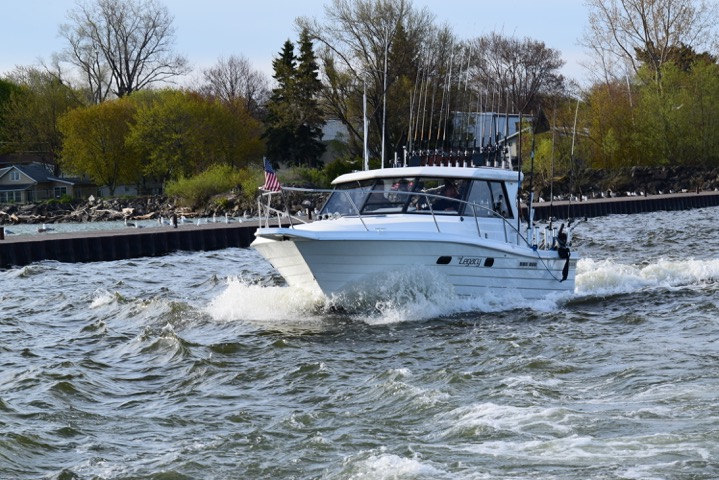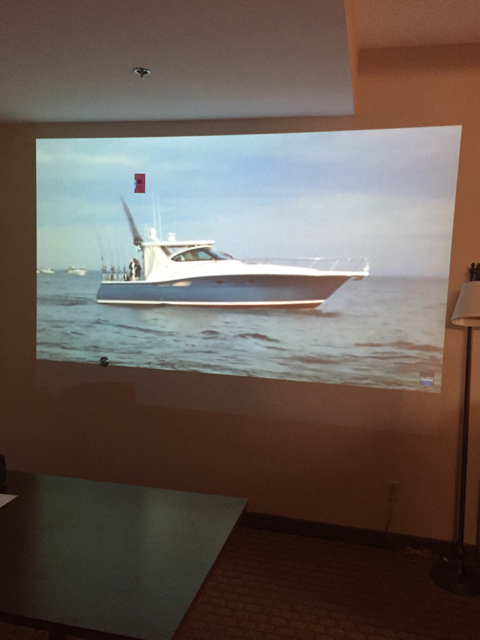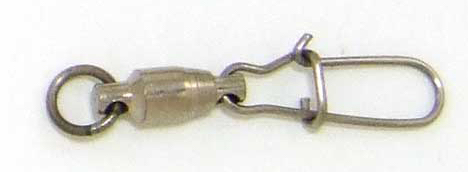-
Posts
7,784 -
Joined
-
Last visited
Everything posted by Legacy
-

New York’s 2015 Lake Ontario Fisheries Program Highlights
Legacy replied to Legacy's topic in Open Lake Discussion
This is what I see... - The best Chinook salmon fishing quality among charter boats occurred during 2003-2015. Fishing quality in 2015, however, was the lowest estimated during this time period and 26% below the 2003-2015 mean. - Fishing quality for brown trout was near record high levels in recent years, however, declined in 2015 to the lowest recorded since 2008 and 27% below the long-term average. - Coho salmon fishing quality was excellent for 5 of the past 10 years, however, in 2015 was 57% below average. - Following seven consecutive years of record or near record high angling success for rainbow trout, the 2015 catch rate was the lowest level since 2005 and a 39% decrease compared to the long term average. -
http://www.lakeerieunited.com/walleye/
-

Pole for copper line
Legacy replied to poplar kraft's topic in Questions About Trout & Salmon Trolling?
An Okuma Classic Pro GLT copper/leadcore trolling rod (model# CP-CL-862M) was designed with copper in mind. Medium/ fast action rod with large stainless eyes and a triangular foregrip. This summer make sure to look out for the new Okuma White Diamond copper/leadcore trolling rods. (yes, i said White Diamond) -
Great Lakes Fishery Research Authorization Act https://benishek.house.gov/press-release/benishek-introduce-bipartisan-legislation-boost-great-lakes-funding-modernize-research
-
Generic fishery act support letter... The Great Lakes Fishery Authorization Act (GLFRA) authorizes the U.S. Geological Survey’s Great Lakes Science Center (GLSC) to conduct essential fishery assessments and undertake critical scientific research into Great Lakes ecosystem functions. Great Lakes management and restoration is a group effort, and the GLSC has a critical role to play in the achievement of shared goals. State, tribal, provincial, and federal agencies conduct their Great Lakes science cooperatively and all agencies routinely share information to leverage resources and to manage using the best information available. The GLSC fills an important niche by investigating ecosystem function, conducting deepwater science, and undertaking the fishery assessments that undergird most day-to-day management decisions. This legislation is needed because, unlike facilities in other parts of the country and in other agencies, the GLSC has operated without an explicit authorization, instead relying on base appropriations from the U.S. Geological Survey. This situation has undermined focus and continuity of the GLSC’s program. The unreliable funding stream for the GLSC has left the center under-equipped to deliver on the science that is so badly needed in the Great Lakes region. The GLFRA remedies the situation by authorizing the appropriations necessary for the GLSC to execute a comprehensive, multi-lake, freshwater fisheries science program; to coordinate its work with other governments so that management is cooperative; and to work with academia and Canadian interests in the most border-blind manner possible. The GLSC, under this new authority, will be able to conduct deepwater ecosystem science, shed light on biological and food web components, help us better understand fish movement and behavior, conduct fish habitat investigations, and contribute to invasive species knowledge and management. Moreover, the GLFRA will encourage the GLSC to integrate new technologies for fisheries science into the basin’s research and management structure. Thank you, again, for introducing the GLFRA. We very much appreciate your commitment to a healthy Great Lakes!
-
Congress has been quite active this winter in terms of Great Lakes legislation. This brief action memo outlines three major initiatives that would benefit from advisor consideration. 1. Funding for the Great Lakes Fishery Commission has been stagnant during the past few years due to sequestration and budget constraints. As such, the commission is in serious danger of losing ground in sea lamprey control (we are at twenty and thirty year lows in Lakes Michigan and Huron respectively, at target in Lake Ontario, and trending downward in Lake Superior). Moreover, we need additional funds to address the frustratingly high sea lamprey numbers in Lake Erie. The recent budget deal in Washington presents an opportunity to restore Great Lakes Fishery Commission funding. Funding, currently at around $21.2 million from the US, does not allow the Commission to implement a full program to protect the $7 billion fishery or to address many pressing threats to the fishery. For example, independent researchers have concluded that the Great Lakes require at least 25% more lamprey control to bring lamprey abundancies to levels optimal to achieve state, provincial, and tribal fishery objectives. The Commission has requested the US increase its base budget contribution from $21.2 to $22.8 million for FY 2017. The Commission also is seeking $3.8 million of capital funding per year, for four years, to deal with dilapidated infrastructure used for sea lamprey and other invasive species control. Bob Lambe and I have spent three weeks in Ottawa and, by end of February, three weeks in DC, communicating budget needs to elected officials and bureaucrats. We have been well-received, but they always need to hear the message from others. ACTION: Please contact your representative and senators and ask for the above-listed funding amounts for the GLFC. Funding comes from the State and Foreign Operations appropriations bill, “International Fisheries Commissions†line. (It is important to note the funding line.) 2. Next week, Congressman Mike Quigley from Illinois and Congressman Dan Benishek from Michigan will introduce bi-partisan legislation called the Great Lakes Fishery Research Authorization Act. This bill authorizes the work of the U.S. Geological Survey’s Great Lakes Science Center. The center, among other things, operates research vessels in each Great Lake (the Kiyi in Lake Superior, the Sturgeon and Arcticus in Lakes Huron and Michigan, the Muskie in Lake Erie, and the Kahoin Lake Ontario), to assess the forage base. That information is used by your management agency in key decision-making, such as stocking levels. The center also contributes to fishery restoration, ecosystem understanding, and invasive species science. The GLFC has long been a strong supporter of the center’s work. Amazingly, the center has never been explicitly authorized by Congress. This lack of authorization has left the Great Lakes at a significant disadvantage in funding for the center’s essential operations and in the application of new technology. Attached is a sample, generic letter of support for the legislation, and a summary fact sheet. ACTION: Consider having your club or organization endorse the legislation. Letters should be sent to your congressman and senators, with CCs to representative Quigley (I can help pass along your letter if you like). 3. Recently, the Great Lakes Restoration Initiative Act of 2015, introduced by Congressman David Joyce of Ohio and Senator Mark Kirk of Illinois, has been on the move in Congress and is on the verge of consideration in the full House and Senate. This legislation authorizes the Great Lakes Restoration Initiative (GLRI). Advisors passed a resolution during the previous annual meeting in support of the GLRI; the secretariat made the advisors’ support known to members of Congress. The resolution is attached for your information. ACTION: Consider writing your representative and senators in support of the Great Lakes Restoration Initiative Act of 2015 (H.R. 223 in the House and S. 1024 in the Senate). Urge Congress to take up the legislation immediately. It is close to going to the full House and Senate, and a nudge from advisors would be appreciated.
-
I wish I did but I am not exactly sureSent from my E6782 using Lake Ontario United mobile app
-
April fool's day is always my goal! Sent from my E6782 using Lake Ontario United mobile app
-
Okuma 45 series is what you are looking for. If you have the money than an Okuma Clarion 453 is top choice. Great drag and 6 to 1 ratio is a big help. As for backing, I always use Blood Run braid. It has been developed specifically for use as backing. 65# test break strength but has the same diameter as typical 30# braid. It is also metered so it changes colors every 100 and its marked every 50.
-
Dont forget http://www.teamthrillseeker.com/niagara.html
-
You definitely need backing. Okuma 30 series reels hold more line then 1000' of wire will fill. It is very important to spool your wire reels to full capacity to help insure that the counters are accurate. Heres some instructions... -put a wrap of electrical tape around reel spool (helps prevent line from slipping on spool) -attach backer to spool with an arbor knot -spool on 250' of 30# mono (really anything will work Braid or mono) -attach backing to wire using an albright knot -spool on 1000' of ss wire (make sure the wire goes on tight) -attach large swivel to business end with a loop knot
-

Salmon Showdown new season- (complete season)
Legacy replied to Legacy's topic in Open Lake Discussion
-
Ill try to update weekly as new episodes are released for viewing. Salmon Showdown Season 6 Episode 1: Michigan City - Season 6 Episode 2: South Haven - Season 6 Episode 3: Grand Haven - Season 6 Episode 4: Sheboygan - Season 6 Episode 5: Manistee Bud - Season 6 Episode 6: Muskegon - Season 6 Episode 7: Ludington - Season 6 Episode 8: Ludington Pt. 2 - Season 6 Episode 9: Manistee Splash - Season 6 Episode 10: Holland - Season 6 https://vimeo.com/161250803 Episode 11: Frankfort - Season 6 https://vimeo.com/161259954 Episode 12: Finale Pt: 1 https://vimeo.com/161266017 Episode 13: Finale Pt: 2 https://vimeo.com/161282016
-

Need suggestions for making quick-change leaders
Legacy replied to Todd in NY's topic in Tackle and Techniques
-
Yeah but we are trying to create something great for Lake Erie the same way Lake Ontario United has done for Lake Ontario/
-
I wouldnt fear the boat but instead fear the boat owner. A boat is only as good as its owner. Theres good ones and theres bad ones. Bring another set of qualified eyes to look at the boat. Your mechanic would be a great choice and ALWAYS invest in a survey.
-

Need suggestions for making quick-change leaders
Legacy replied to Todd in NY's topic in Tackle and Techniques
Theres no reason that you cant tie up certain lengths of leaders and have them ready to go. I have numerous pretied leaders on the boat for just about every application. And i store them with one of these http://www.cabelas.com/product/Lindy-Spinner-Wrap-Kit/737752.uts?productVariantId=1200294&srccode=cii_17588969&cpncode=36-169258553-2&WT.tsrc=CSE&WT.mc_id=GoogleProductAds&WT.z_mc_id1=00022662&rid=20 FYI, you should be running high quality swivels to connect your baits to the business end of all of your rods especially flashers and spoons. -
Read more
RT @BayRatLures: 1 Last BT Candy Left. Who is going to get it?! #nearlygone #browntroutcandy #fishinglures https://t.co/f5eK0Bu9Fa
-

Was last May normal for salmon?
Legacy replied to flybuster's topic in Questions About Trout & Salmon Trolling?
No, we havent seen a "typical" spring since 2013. The cold winters have made things unique for the past couple of years. The east end has seen great spring KIng action and Rochester King fishing has been stellar following the past two cold winters. This year we should experience a more typical spring fishery and make the west even better. -

Church tx44 inline planer and dipsy
Legacy replied to SALMONBOY35's topic in Questions About Trout & Salmon Trolling?
You could but it is not necessary. Instead just run your divers on two different setting. For example: the inside rod on a 1 setting and the outside rod on a 3 -

Clarion 553LS-Copper
Legacy replied to bassman69767's topic in Questions About Trout & Salmon Trolling?
Problem is the Daiwa Seagate 60 actually has a larger capacity then the okuma 55. No matter what manufactures say. Sent from my E6782 using Lake Ontario United mobile app



